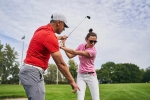Is PRP helpful for Golfer's Elbow?

Platelet-rich plasma (PRP) therapy is increasingly used for treating various musculoskeletal conditions, including golfer's elbow (medial epicondylitis). PRP therapy involves injecting a concentration of a patient’s own platelets to accelerate the healing of injured tendons, ligaments, muscles, and joints. Here are the key indications and considerations for PRP therapy in golfer's elbow:
Indications for PRP Therapy in Golfer’s Elbow
-
Chronic Medial Epicondylitis
- PRP is often considered when the condition is chronic (lasting more than three to six months) and resistant to conservative treatments such as rest, physical therapy, and non-steroidal anti-inflammatory drugs (NSAIDs).
-
Failure of Conservative Treatments
- Patients who do not respond to conservative treatments like bracing, activity modification, physical therapy, and corticosteroid injections may be candidates for PRP therapy.
-
Persistent Pain and Dysfunction
- Individuals experiencing persistent pain and functional impairment affecting daily activities and sports despite other treatments may benefit from PRP injections.
-
Desire to Avoid Surgery
- PRP may be an option for patients seeking to avoid surgical intervention and its associated risks and recovery time.
-
Confirmed Diagnosis via Imaging
- Ultrasound or MRI confirming the presence of tendon degeneration or partial tears can help in deciding PRP therapy.
PRP Therapy Procedure
-
Blood Draw
- A small amount of the patient’s blood is drawn, usually from the arm.
-
Centrifugation
- The blood is placed in a centrifuge, which separates the platelets from other blood components.
-
Preparation of PRP
- The concentrated platelets are then prepared for injection.
-
Injection
- The PRP is injected into the affected area of the elbow under ultrasound guidance to ensure precise placement.
Benefits of PRP Therapy
-
Accelerated Healing
- Platelets contain growth factors that promote tissue repair and regeneration, potentially speeding up the healing process.
-
Reduced Pain
- PRP can reduce pain and improve function, facilitating a quicker return to normal activities.
-
Minimally Invasive
- The procedure is minimally invasive with a lower risk profile compared to surgery.
Considerations and Potential Risks
-
Side Effects
- PRP injections are generally safe, but some patients may experience mild pain, swelling, or bruising at the injection site.
-
Effectiveness
- While many patients report significant improvement, results can vary. Some studies support the effectiveness of PRP for tendinopathies, while others show mixed outcomes.
-
Multiple Injections
- Some patients may require more than one PRP injection for optimal results.
Contraindications
- Active Infection
- PRP therapy should not be performed in areas with active infection.
- Blood Disorders
- Patients with certain blood disorders or on anticoagulant therapy may not be suitable candidates.
Summary
PRP therapy is a promising treatment option for golfer’s elbow, particularly for patients who have not found relief with traditional therapies. It is essential to have a thorough evaluation by a healthcare provider to determine if PRP is appropriate based on individual health status and the severity of the condition.







